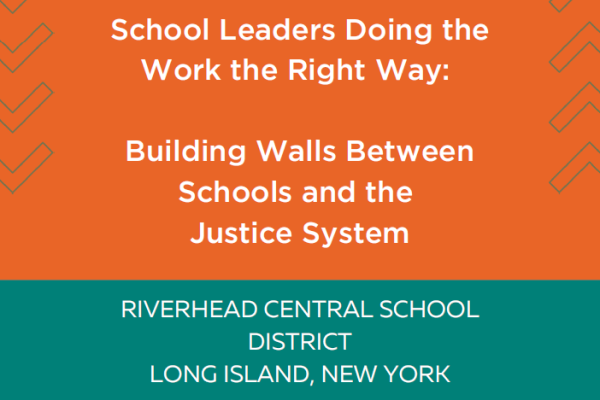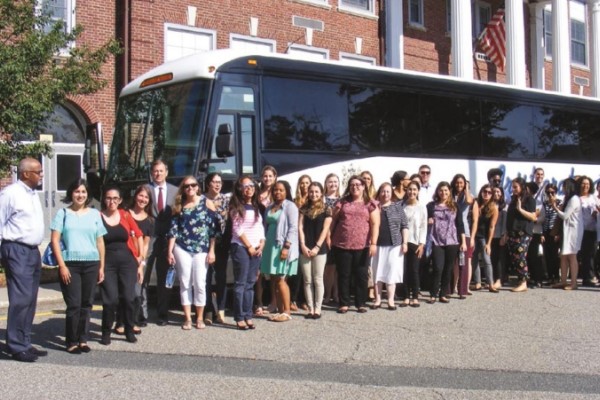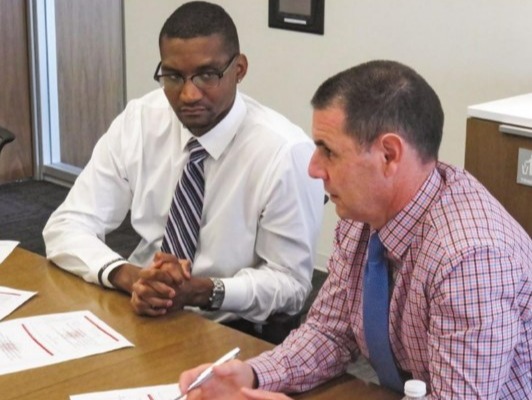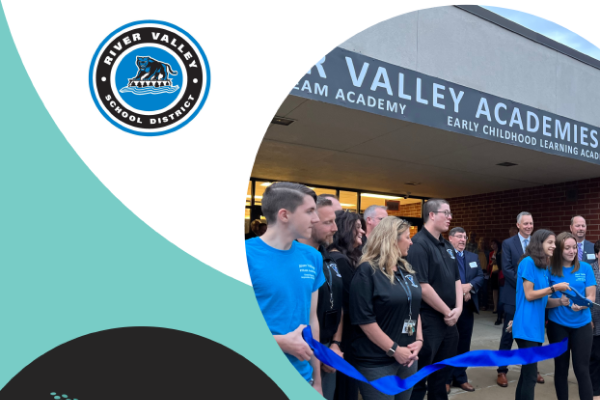Building Walls Between Schools and the Justice System District Profile: Riverhead Central (N.Y.)
May 11, 2023
 To combat the over-reliance on in- and out-of-school suspensions, the district moved to a restorative practice model that includes social workers and psychologists as part of the three-year implementation strategy.
To combat the over-reliance on in- and out-of-school suspensions, the district moved to a restorative practice model that includes social workers and psychologists as part of the three-year implementation strategy.
The district noticed large numbers of in- and out-of-school suspensions in 2019. To combat the over-reliance on in- and out-of-school suspensions (ISS and OSS), the district moved to a restorative practice model that includes social workers and psychologists as part of the three-year implementation strategy. Although the district still utilizes progressive discipline, its reliance on it has decreased.
The first round of 50 staff members was trained in summer 2021 and implementation began in the 2021-2022 school year. Training consisted of three full days of comprehensive training focused on change in language and processes towards students. The 50 trained staff members represent all of the schools in the district, and they were tasked with “planting the seeds of restorative practices in each building” and with creating a culture of care and healing as they look to the root causes of student behavior. This is built upon the district’s recognition of students’ need for respect.
They are also working with students to be more self-reflective to figure out their own “why’ as part of positive self-advocacy to manage their behavior. Students take responsibility, articulate the wrong of their actions and determine next steps to avoid future infringement. Often, conflict is associated with miscommunication, creating an importance on helping students reflect and respond. Restorative practice is implemented in the classroom and afterschool activities, as facilitators utilize restorative circles. In contrast to school detention or ISS, restorative circles create a new line of communication among students and facilitators.
The district has noticed the power of language shifts regarding discipline and how the student interprets its value. Overall, the district wishes to differentiate the roles of a facilitator from those of a social worker. New restorative practices teams will be trained each year with full implementation set to occur in the 2023-2024 school year.
With a concentration on improvements through quality evaluation and professional development, the district mantra is “People, not programs.”
Located in Suffolk County on Long Island, N.Y., Riverhead Central School District draws students from three townships: Southampton, Brookhaven and Riverhead. The superintendent, Augustine Tornatore, has been in the district since July 1, 2021. This suburban district has just fewer than 6,000 students and is diverse, both racially and in socioeconomic status.
Demographics in the district have changed over the past 20 years or so, with a growing population of English Language Learners (ELL) who come mostly from Guatemala. More than 20 languages are spoken in the district, but all materials, both written and spoken, are provided in English and Spanish.
The Suffolk County jail is located within Riverhead’s boundary. This jail serves as a reminder to school staff members to break the “poverty-to-prison pathway,” as they work to meet the needs of all students. This includes providing universal free meals to all students.
Superintendent: Augustine Tornatore
Number of Students: 5,829
Demographics: 8% American Indian/Alaskan Native; 9% African American; 58% Hispanic; 1% Asian/Pacific Islander; 31% White; 2% Multiracial
District Type: Suburban
Free And Reduced Meals Rate: 62%
Additional Resources
With funding from the Annie E. Casey Foundation, AASA profiled five school districts that are building walls between schools and the justice system, engaging in restorative practices, working to eliminate bias and disproportionality, and providing all children with fair and equitable access to high-quality opportunities.
AASA sought districts that worked intentionally to reduced school-related juvenile justice interactions where the superintendent and school system played a key role in changes to limit youth interaction with law enforcement, school-based arrests, and juvenile justice.
Each district profiled noted the impact that Covid-19 had on their efforts. While time out of school due to the pandemic posed challenges for everyone, it also provided districts with opportunities to make bold moves, such as fully embracing Social, Emotional Learning (SEL) and eliminating SRO contracts.
Advertisement
Advertisement
Advertisement
Advertisement



